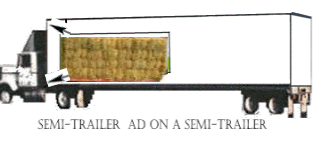My question in the title might not be very descriptive so I am re-writing it here:
If there is a truck in motion and it has stack of hay (lets suppose) on the back. Now if the truck comes to a sudden stop will it stop faster if the force exerted by the truck on hay had overcome the friction force (another wording: will it be faster if the hay slips forward) or will it stop faster if the hay remains constant.
EDIT:
I do not know where everyone is getting tied down option or not. The hay isn't tied down (sorry for misguiding). There are two situations, it slides on the trucks back or it doesn't slide on trucks back. And in which situation does the truck stop faster?




